Our Verdict
The RTX 4080 Super is more a relaunch of the much maligned original RTX 4080 than an exciting new card in its own right, but it is still a GPU with serious gaming chops. But with no tangible performance difference it's the $200 relative price cut that does the work of rehabilitating the erstwhile RTX 4080. AMD's similarly priced, similarly performing RX 7900 XTX is still a thorn in the second-tier Ada card's side, however.
For
- Priced at a more understandable level
- Great gaming performance
- Super efficient GPU
- Lovely matte black shroud
Against
- Still priced too high
- No tangible performance gains over RTX 4080
- AMD's RX 7900 XTX remains stiff competition
PC Gamer's got your back
The RTX 4080 Super is the most straightforward of all the newly refreshed Ada-based graphics cards because, y'know, it's actually just a cheaper RTX 4080. Sure, the GPU at its heart has a few more shaders, but we're talking about negligible performance gains that can almost be waved away as being within normal realms of benchmark variance.
It is, however, dropping at a significantly lower cost than its RTX 4080 forebear, and a $200 price cut for the same essential level of gaming performance can only be a good thing. Though that does have to be taken with a certain level of necessary cynicism. I would argue the original card's $1,200 sticker price bordered on foolhardy greediness on the part of the green team, and that takes some of the shine off.
It does, however, now mean the RTX 4080 makes more sense within its position in the Ada tech tree. With the $1,600 RTX 4090 now placed well above it—both in terms of specs, overall performance, and finally price—there is less of a chance of that top-end card cannibalising sales of this second-tier GPU.
Though given the increased pricing of the RTX 4090 now that the China sales ban has bitten that is arguably less of an issue than it was when the RTX 4080 was originally released. At that point in time the $1,200 price tag felt far too close to the $1,600 of the significantly better chip, and if you could consider dropping over a grand on a graphics card, it wasn't a much bigger leap to spend a little more (relatively speaking) on one that was tangibly better. And realistically better value.
I've argued before that this RTX 4080 Super price tag feels like a tacit admission Nvidia screwed up the pricing of the original card, especially as the green team hasn't dropped the pricing of any of the other Super cards. Nvidia is just straight up replacing that $1,200 card, as of today, with a barely perceptibly better $999 version.
Pity anyone who picked up a $1,000+ RTX 4080 in the last 12 months, eh?
Nvidia RTX 4080 Super verdict
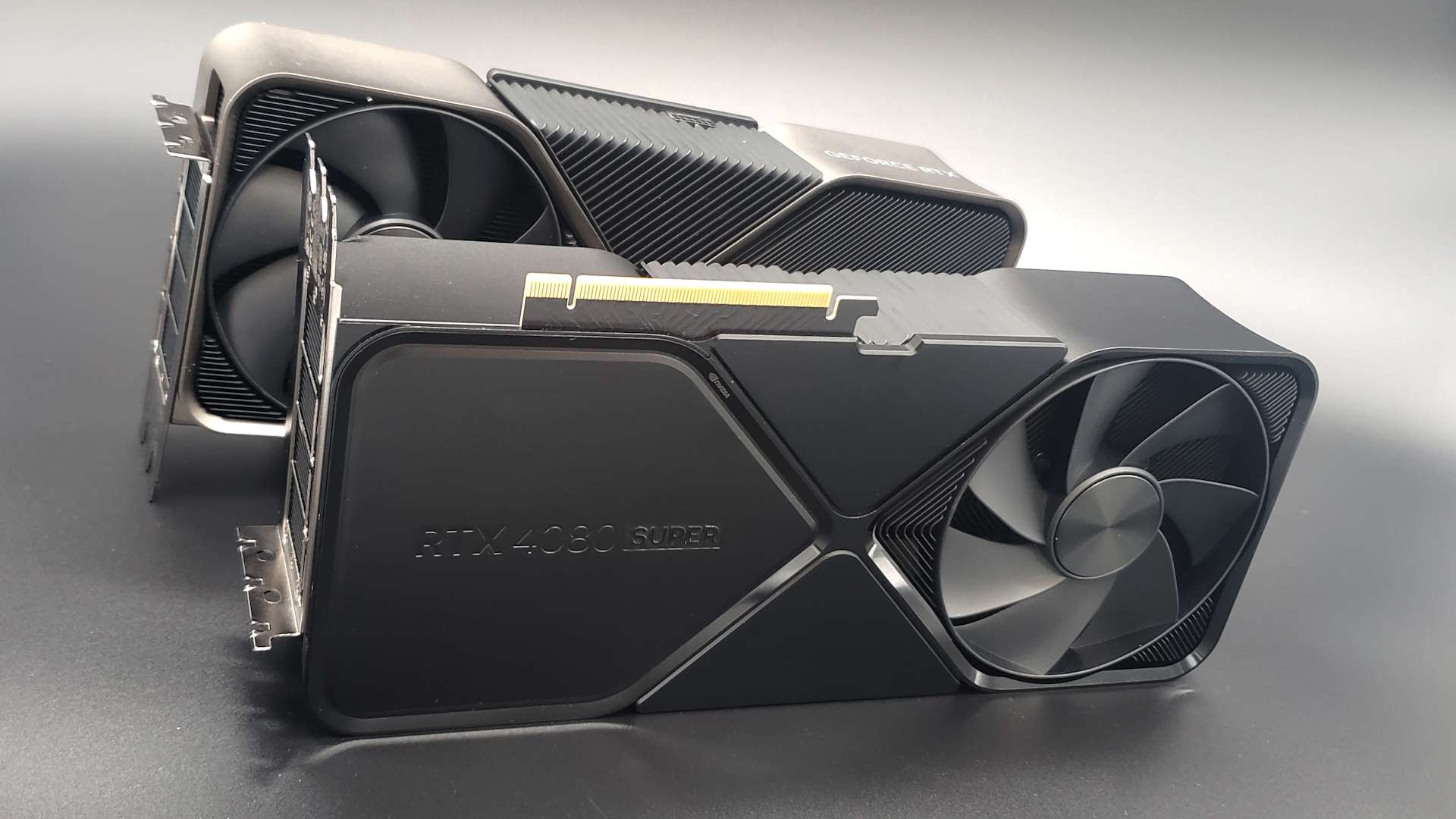
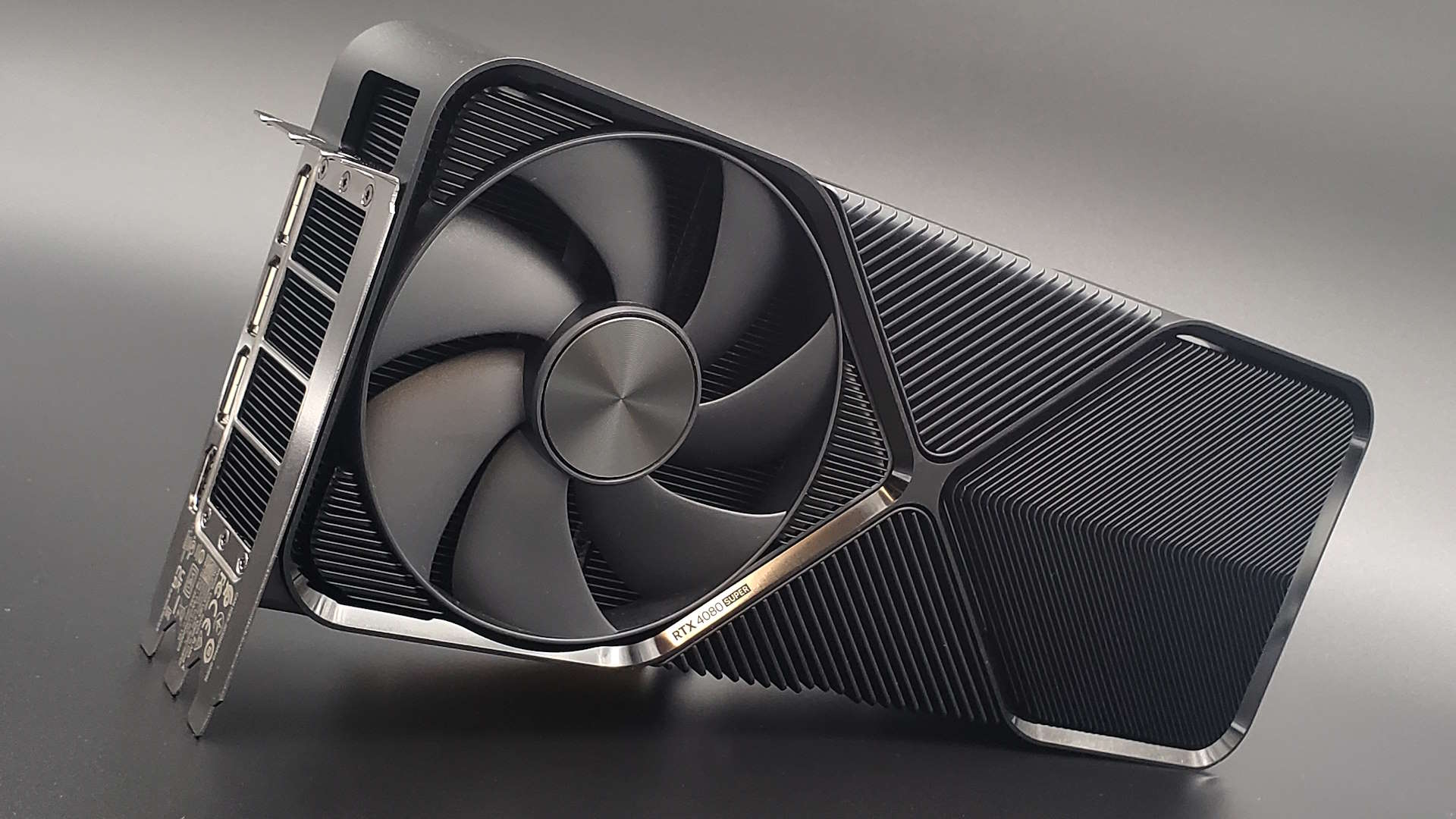
✅ You can find an MSRP card: The price cut is the real strength of the Super variant, and that benefit diminishes if you can only find cards north of $1,000 to buy.
✅ You want good 4K ray traced gaming performance: Ada is efficient and really good at dealing with the rigours of ray tracing. Add DLSS and Frame Generation to the mix and the RTX 4080 Super excels at delivering solid 4K frame rates.
❌ Ray tracing means nothing to you: In pure rasterised gaming terms, the RX 7900 XTX from AMD can often outperform the RTX 4080 Super, and that makes it a very tempting option, especially if you can find one cheaper than the Nvidia card.
Less is more, right? I mean, technically the RTX 4080 Super is actually more is less when you consider you're now getting the full AD103 GPU for less cash. But it's the pricing change which is the real kicker for the new second-tier Ada card as it's the only tangible difference.
Though it's not like you'd ever need to weigh up the differences between the RTX 4080 and the RTX 4080 Super; the older version has effectively been killed and it's just the overpriced legacy cards getting ever more dusty as they sit, unloved and unwanted, on the shelves of any retailer unlucky enough to still be holding onto stock.
So, it's all about weighing up how much of a difference that price cut has made to the positioning of the RTX 4080 Super. And honestly, it's not as much as I'd want. Even this $999 price should have been the absolute upper limit on the ludicrous overclocked, liquid-chilled versions from GeForce board partners, not the straight MSRP of Nvidia's second-tier RTX 40-series card.
That a year after launch the price of the RTX 4080 has only now dipped below $1,000 (around Black Friday last year we saw the first card to drop that low), and now this Super version is starting there, well, it's all very welcome. Though I just can't find myself getting too excited about moderately lower pricing that still feels like it's far too much.
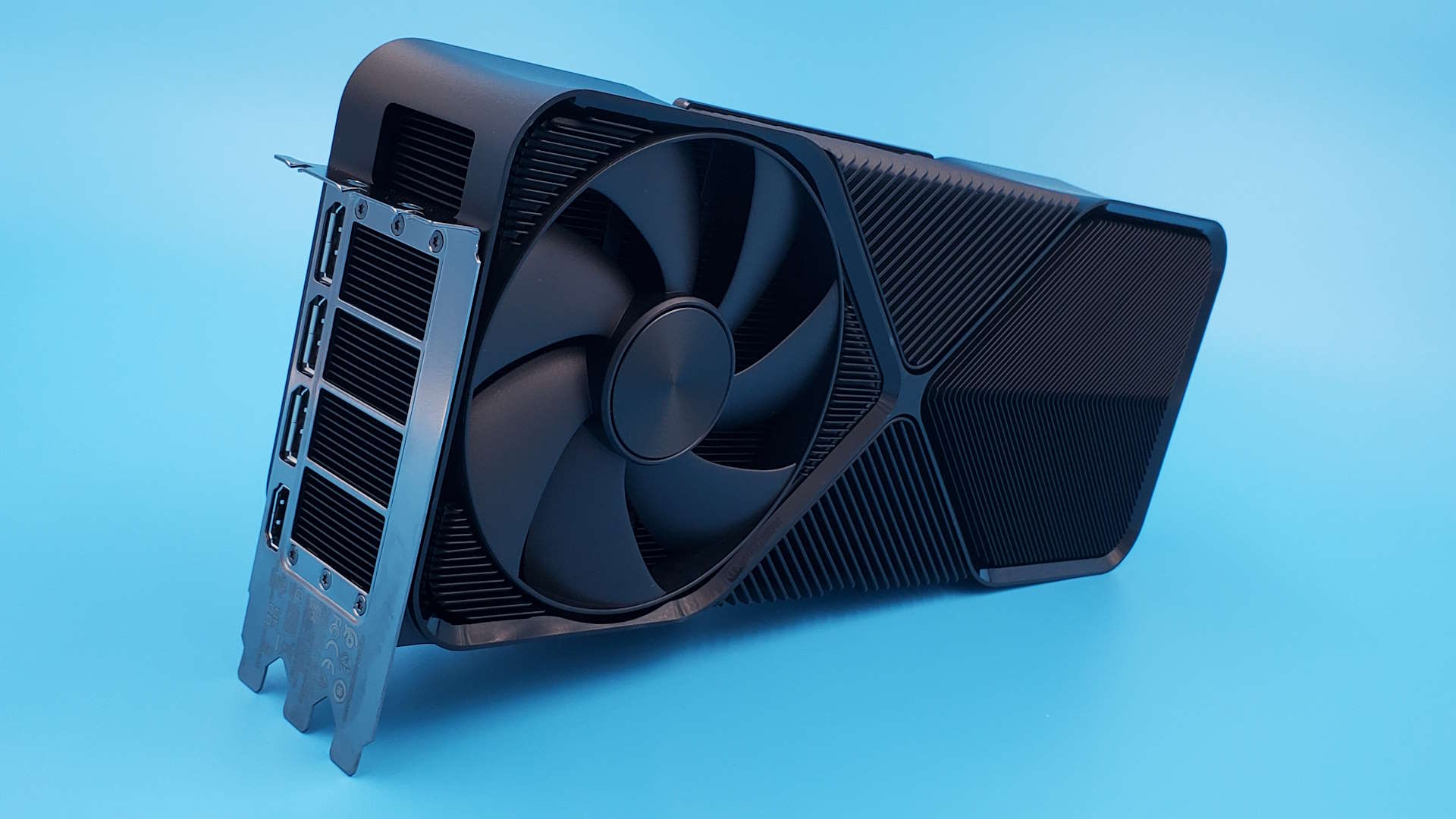
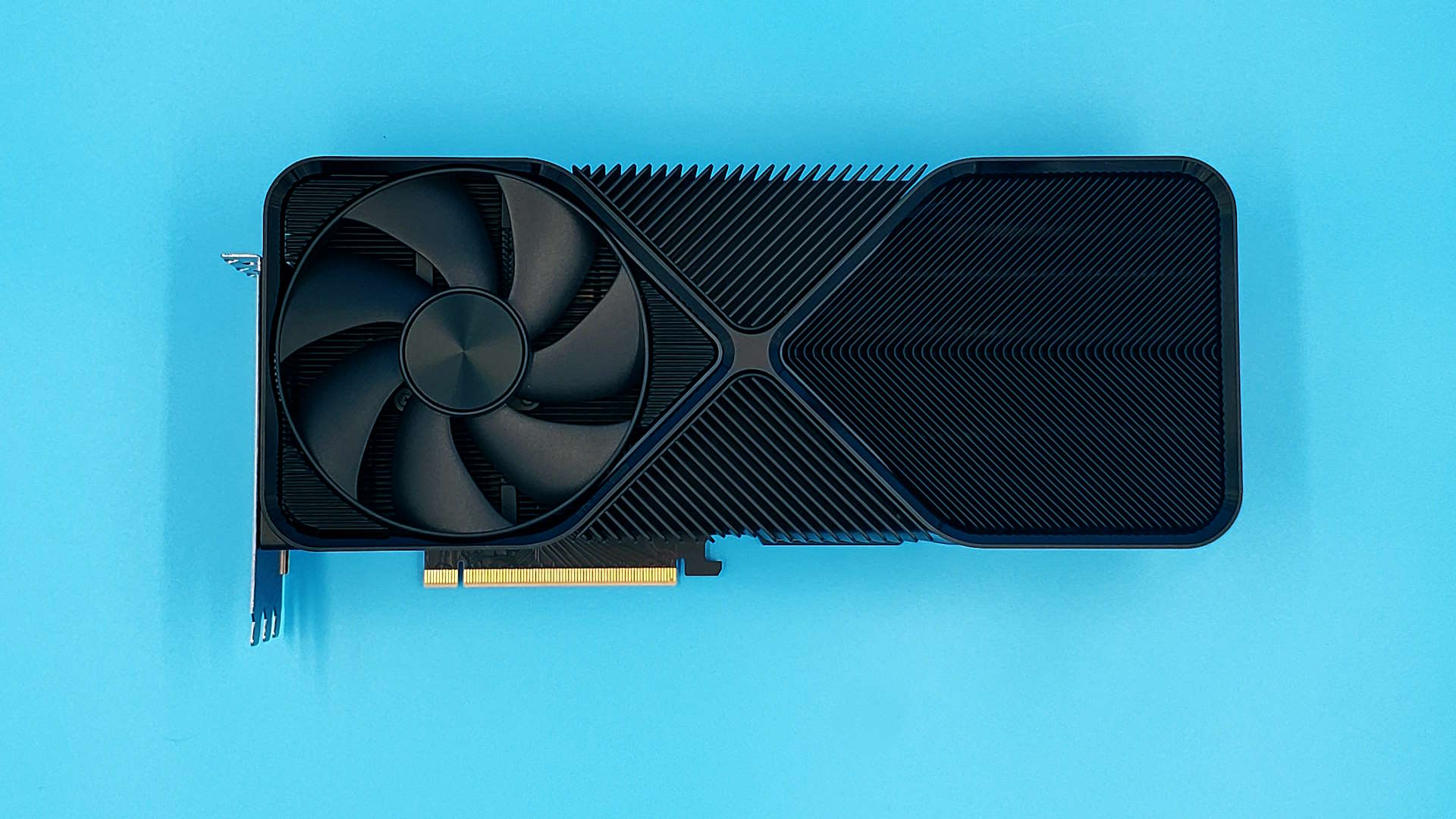
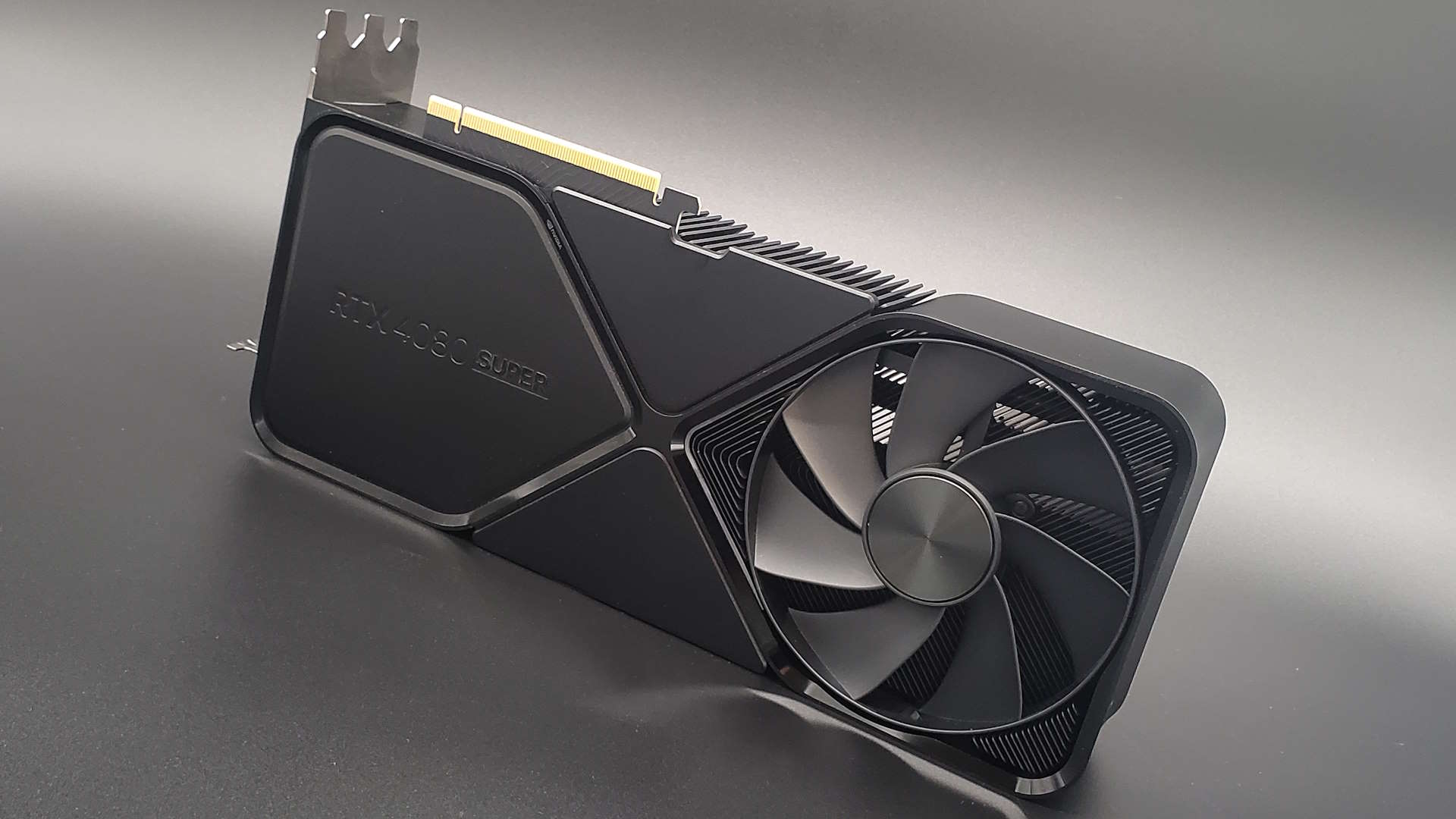
I wouldn't begrudge anyone picking the RX 7900 XTX over the latest GeForce GPU.
But we can't get too bent out of shape over what might have been; this is about the product I have in front of me, and the RTX 4080 Super is the same super-powerful graphics card it was 14 months ago when its progenitor launched. It's a card which makes the once top GPU of the Ampere age look utterly laggardly—and incredibly inefficient—by comparison. Now, at $999, it looks even better put up against the $1,500 RTX 3090 of the previous gen.
The price cut and slight performance bump does also now make it tougher for AMD's best RDNA 3 card by comparison, though it is still very tight. Our two original reference RX 7900 XTX cards were beset by thermal issues and performed very badly, but third party cards, and subsequent driver improvements, resulted in a Radeon GPU that was generally priced below the $1,200 RTX 4080 but in pure raster terms often outperformed it.
Now, with a solid $999 MSRP, the RTX 4080 Super doesn't change the game in terms of comparative performance—on average 2% slower at 4K settings—but it does make it generally cheaper than the speedy third-party OC RX 7900 XTX cards. With the Nvidia card often faster with ray tracing games, and the AMD speedier in purely rasterised games, I'd say it kinda all evens out. But with the weight of ecosystem behind it, that just about swings it for the RTX 4080 Super; the extra AMD memory capacity doesn't make a big difference in gaming terms for me.
But it is still a close run thing, and I certainly wouldn't begrudge anyone picking the RX 7900 XTX over the latest GeForce GPU if they could find it for less.
Though after a year of reportedly poor RTX 4080 sales—and worse press around its launch and pricing—the RTX 4080 Super does feel like a pretty successful relaunch. It's got a pretty new shroud, as good an AD103 GPU as it could jam in there, and the same great performance but for a lower price.
RTX 4080 rehabilitation, done.
Nvidia RTX 4080 specs


The RTX 4080 Super fills its boots with the full AD103 GPU, meaning you're getting all the SMs that second-tier Ada Lovelace chip can offer. With that comes 80 Streaming Multiprocessors (SMs) and all 10,240 CUDA cores that come with that. Which sounds like an awful lot—and it kinda is—but it's still only a rather modest increase over the original RTX 4080.
That GPU launched with 76 SMs and 9,728 CUDA cores, so you're only getting another four SMs, which come with 512 cores, and along with that comes another four RT cores, too. It's worth noting that's it for the actual silicon changes, as there's no extra L2 cache dropped into the shared pool of cache memory previously on offer.
The only other thing that has really changed between the RTX 4080 and this new Super version, is that you're getting some slightly faster memory. But it's not tangible or in any way meaningful as you're only getting 23Gbps GDDR6X versus 22.4Gbps for the original card.
| Header Cell - Column 0 | GeForce RTX 4080 Super | GeForce RTX 4080 |
|---|---|---|
| GPU | AD103 | AD103 |
| Lithography | TSMC 4N | TSMC 4N |
| CUDA cores | 10240 | 9728 |
| SMs | 80 | 76 |
| RT Cores | 80 | 76 |
| Tensor Cores | 320 | 304 |
| ROPs | 112 | 112 |
| Boost clock | 2,550MHz | 2,505MHz |
| Memory | 16GB GDDR6X | 16GB GDDR6X |
| Memory speed | 23Gbps | 22.4Gbps |
| Memory bandwidth | 736GB/s | 717GB/s |
| L1 | L2 cache | 10,240KB | 65,536KB | 9,728KB | 65,536KB |
| Transistors | 45.9 billion | 45.9 billion |
| Die Size | 378.6mm² | 378.6mm² |
| TGP | 320W | 320W |
| Price | $999 | £959 | $1,200 | £1,269 |
Interestingly, Nvidia has actually taken a teeny backwards step in one regard—both the base clock and the boost clock are rated higher than the AD103 was in the RTX 4080, but in our testing the in-game average frequency of the RTX 4080 Super is surprisingly lower. It's by less than 100MHz, so not hugely significant, but it potentially hints that the extra enabled silicon which is pushing up the power draw is also consequently holding back the overall clock speed.
The lovely matte black finish on the shroud is gorgeous, but in all other regards the cooling is identical between it and the Founders Edition of the original RTX 4080, so it's not like the chip is getting any hotter under that absolutely huge, triple-slot cooler.
Nvidia RTX 4080 Super benchmarks
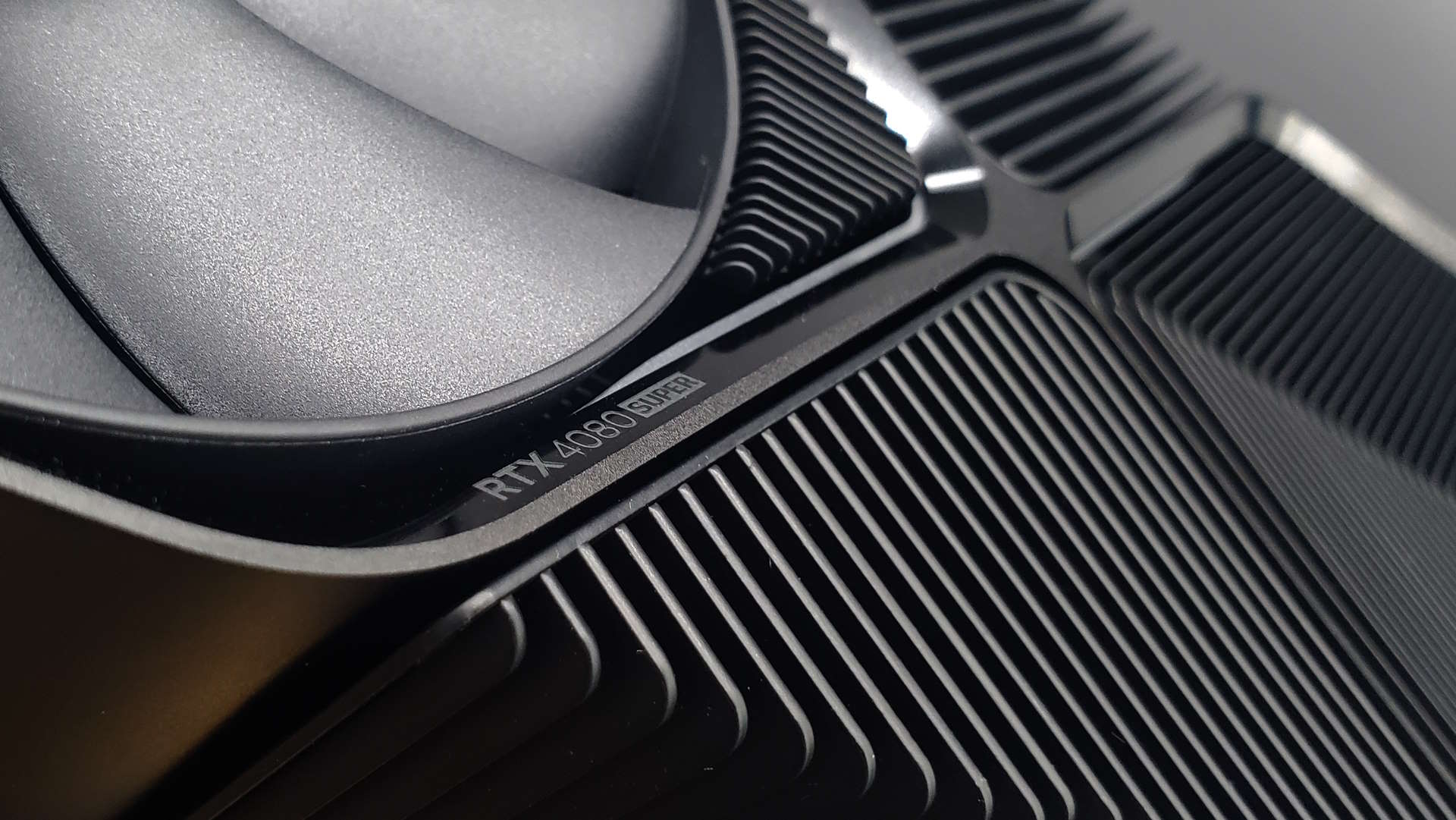
Nvidia RTX 4080 Super performance
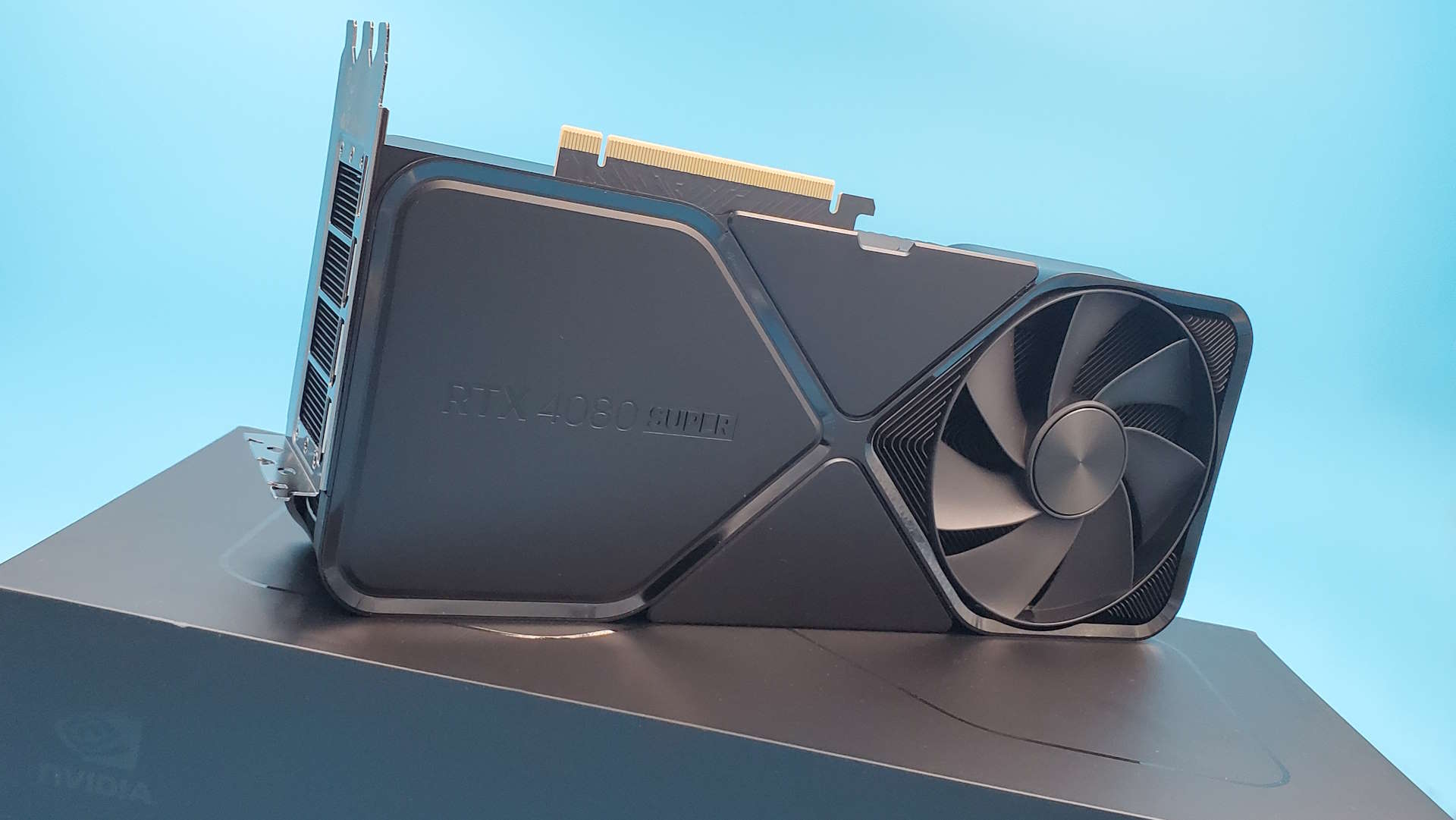
As you should expect, the modest increase in GPU core count and memory speeds don't really amount to anything in terms of actual gaming performance. On average, across our gaming benchmarks, we're looking at 2% and 1% faster in 1440p and 4K tests respectively.
Which, if I'm being honest, is within the realms of general testing variance, so effectively inconsequential. There are a couple of instances where the RTX 4080 very slightly outperforms its Super edition, but again those are just going to be down to differences you will get when benchmarking a host of different graphics cards.
The RTX 4080 Super, though, remains a very fast gaming graphics card. Compared with the previous generation's RTX 3080 Ti, itself a $1,200 card at launch, the performance delta is pretty huge, and that's before we start factoring in DLSS and Frame Generation.
Equally huge, however, is the delta between the RTX 4080 Super and the OG RTX 4090. That top card—priced at effectively the same level as the RTX 3090 before it—was the real standout from the RTX 40-series, and remains so to this day. There's no need for a Ti or Super variant of that card, at least not yet.
It's far and away a better gaming GPU than the RTX 4080 and that was why the original second-tier Ada was such a tough sell at $1,200. If you're already spending north of $1,000 on a new GPU, why not go all out and get the absolute best graphics card around?
What's a tougher read for the RTX 4080 Super is the comparative performance against the top AMD card, the Radeon RX 7900 XTX. Our testing of the $1,100 Sapphire Nitro+ version had none of the hotspot issues that plagued all of the AMD reference cards we benchmarked, and our latest numbers show the Radeon often outpacing the RTX 4080 Super in pure raster terms, and not that far behind on ray-traced titles, either. It also sports 24GB of VRAM if that floats your boat, which all makes a rather compelling story for the AMD card.
Nvidia RTX 4080 Super analysis

Whatever you say about the performance of the card, the RTX 4080 desperately needed a relaunch.
Did Nvidia really need to bother making the RTX 4080 Super? That's a question I've been asking as I benchmark the latest Ada GPU, and from a pure silicon point of view I'd have to say, no. The performance gains are negligible at best and it means Nvidia can only use 100% perfect AD103 GPUs off the production lines because it needs the full chip to power an RTX 4080 Super.
It can now drop AD103 chips that don't make the grade into the new RTX 4070 Ti Super, so it does still has a market for those mildly defective GPUs. But equally Nvidia could have offered gamers effectively the same experience by simply cutting the price of the RTX 4080 by $200 and not be beholden to 100% working AD103 silicon or go to the expense of creating a pretty new matte black shroud.
But Nvidia actually did need to make a Super variant, even if it's all but identical to the original, because whatever you say about the performance of the card, the RTX 4080 desperately needed a relaunch. And if a slight GPU boost and a new shroud is all it takes to erase the bad feelings and bad press around the RTX 4080, then an RTX 4080 Super absolutely makes sense.
As noted before, the comparative price cut is the thing which is really pushing the RTX 4080 Super on, and it's interesting to note how that is now matching the silicon delta between the original RTX 4080 and RTX 4090. The AD103 in the RTX 4080 Super works out as around 62% of the physical size of the AD102 inside the RTX 4090, contains 60% the transistor count, and 63% the number of CUDA cores.
And now it's 62% cheaper.
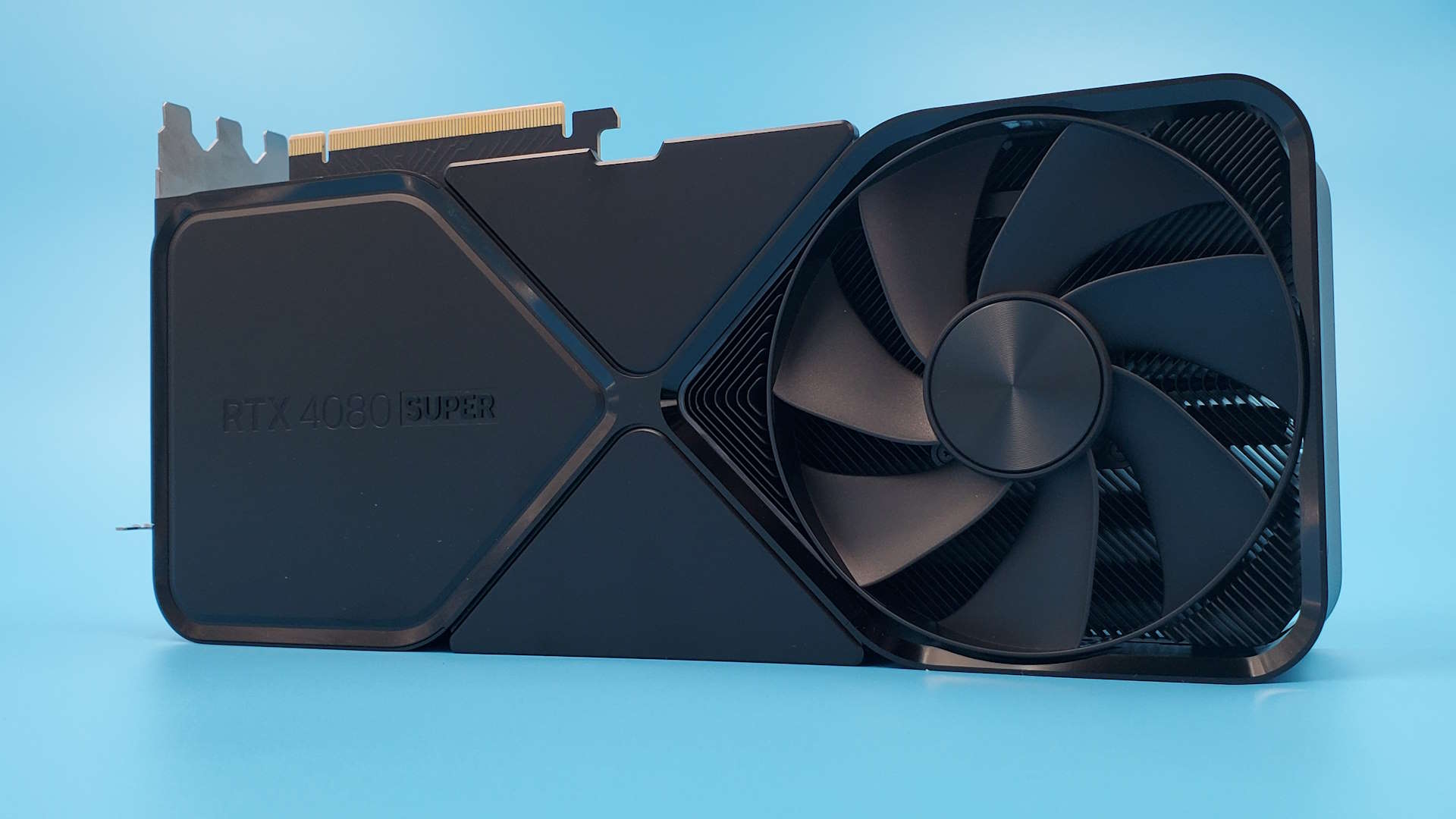
The completely raw (manufacturing costs notwithstanding) maths makes sense, and it's easy to conclude the price is finally in a place where this chip needs to be. I will obviously argue that's where it needed to be at the initial RTX 4080 launch—and did in my original review—so we ought now to be looking at either an even cheaper RTX 4080 Super or one that uses a cut-down version of the AD102 with a healthy performance bump.
The positioning against AMD's best chip does also now makes sense, given the Radeon RX 7900 XTX trades gaming blows with the RTX 4080 Super and is around the same price. But now the pricing of the RTX 4080 Super is so close it's the extra strength of its ecosystem which slightly weighs in Nvidia's favour. But are we likely to see a broad price cut of the RX 7900 XTX in response? Stranger things have happened and that should have an impact on which card you ultimately choose to spend your ~$1,000 on.
If the AMD card drops below the price of the new RTX 4080 Super, or all you can buy is an overclocked $1,100+ variant of Nvidia's latest GPU, then I'd suggest hopping over to the Radeon side.
The RTX 4080 Super is more a relaunch of the much maligned original RTX 4080 than an exciting new card in its own right, but it is still a GPU with serious gaming chops. But with no tangible performance difference it's the $200 relative price cut that does the work of rehabilitating the erstwhile RTX 4080. AMD's similarly priced, similarly performing RX 7900 XTX is still a thorn in the second-tier Ada card's side, however.

Dave has been gaming since the days of Zaxxon and Lady Bug on the Colecovision, and code books for the Commodore Vic 20 (Death Race 2000!). He built his first gaming PC at the tender age of 16, and finally finished bug-fixing the Cyrix-based system around a year later. When he dropped it out of the window. He first started writing for Official PlayStation Magazine and Xbox World many decades ago, then moved onto PC Format full-time, then PC Gamer, TechRadar, and T3 among others. Now he's back, writing about the nightmarish graphics card market, CPUs with more cores than sense, gaming laptops hotter than the sun, and SSDs more capacious than a Cybertruck.

